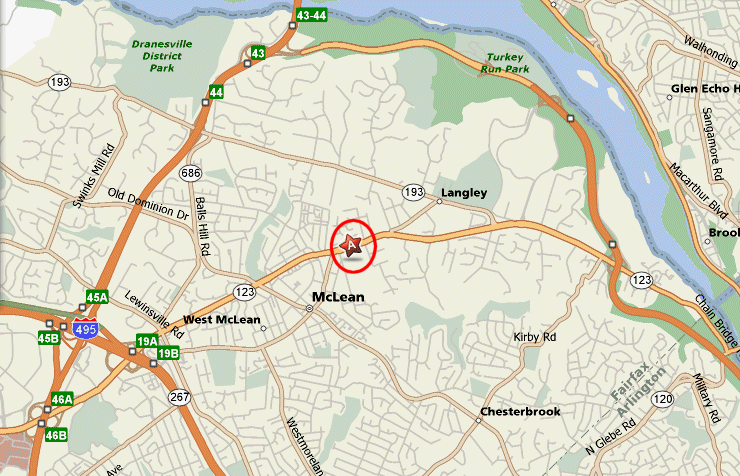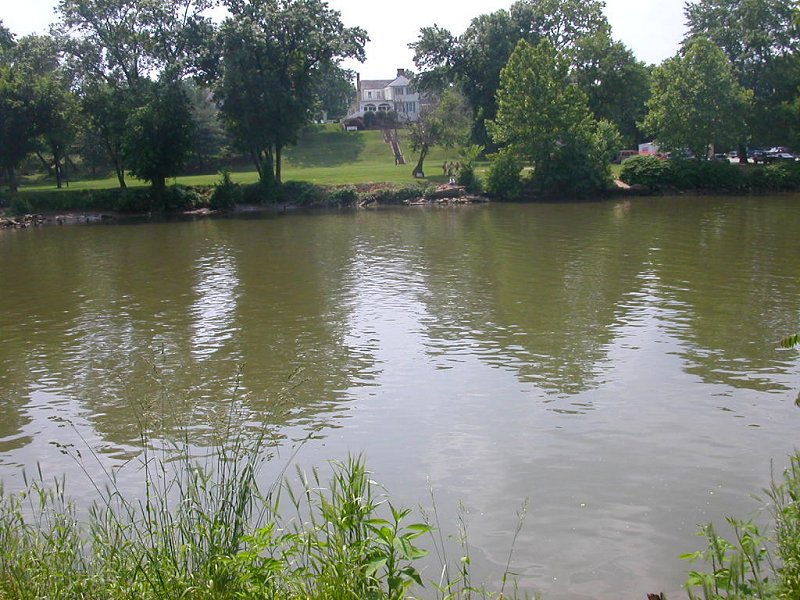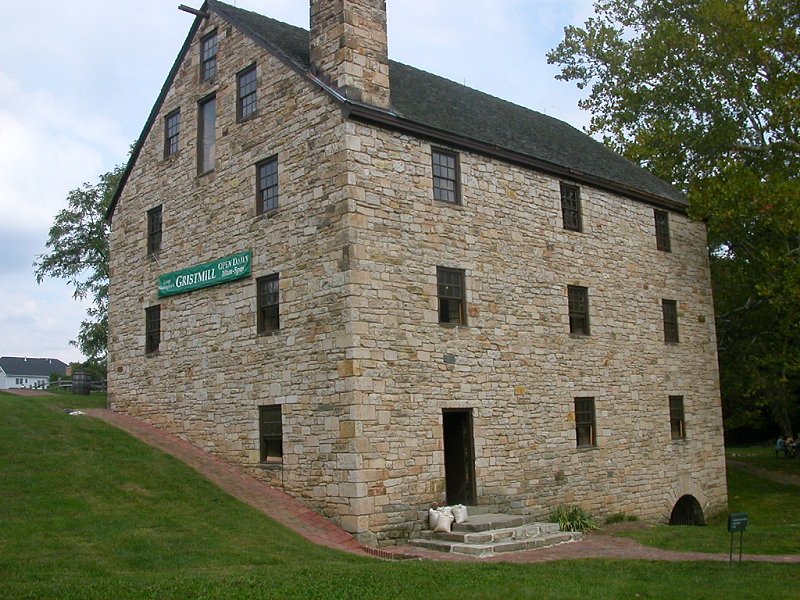
Salona, near McLean (at 1235 Dolley Madison Blvd)
Source: Mapquest
Something happened everywhere in Northern Virginia. Pick any spot, and someone will have stood there already. Pehaps someone famous was there.
For example, President Madison and his wife Dolley fled separately from the British attack on Washington, DC on August 24, 1814, when the "President's House" was burned. The president crossed the Potomac River into Northern Virginia, and stayed overnight at Salona in Mclean. That was an old home of Lighthorse Harry Lee, who tried to develop Matildaville at Great Falls and delivered the eulogy of George Washington that include the phrase "First in war, first in peace, first in the hearts of his countryman..."
When you visit either Salona or Great Falls, you might get a tingle as you walk in the same places as famous folk. You might get a similar tingle if you drive down Dolley Madison Boulevard in August... if you understand that stretch of highway is named after the flight of the first lady through the area.
Or you might get a tingle because you have your own personal memories of a particular area. You may not be famous (yet...), but your personal memories may have more significance that the clattering of horses and the chattering of gentry nearly 200 years ago. You remember places where significant events occurred in your life. Can you close your eyes now and remember the setting of your first car accident, or your first kiss?
Salona was added to the National Register of Historic Places in 1973. It was officially nominated to the National Register by the State Historic Preservation Officer (SHPO) of Virginia, but anyone can prepare a nomination to the National Register (including property owners, local governments, and historical societies). Such nominations are screened by a state review board, composed of professionals in the fields of American history, architectural history, architecture, prehistoric and historic archeology, and other related disciplines. The review board makes a recommendation to the SHPO either to approve the nomination if, in the board's opinion, it meets the National Register criteria, or to disapprove the nomination if it does not.
There are four criteria that qualify a place for listing:

Getting listed on the National Register (or the Virginia Landmarks Register, a state equivalent started in 1966) helps a landowner qualify for grants, tax deductions, and special consideration when Federal agencies are building roads or otherwise disturbing a site. However, getting listed does not protect a site from the landowner. If a local historical society or city/county government wants to ensure a structure is not demolished by a landowner preparing for new development, then the best protection is to purchase the structure - or acquire at least an easement. Easements are property rights that can be enforced by a court, while zoning and informal understandings can change.
The landowner can separate the "bundle of rights" and sell the right to destroy property. The right to destroy can be sold, while retaining other rights - such as the right to keep the structure as a private home, with no public access.
Robert E. Lee's boyhood home in Alexandria was once open to the public, but was sold and is now a private residence. (Many local residents in Alexandria were unaware of the status of the property, and just assumed it would always be open to the public. The March 7, 2000 headline in the Washington Post was 'Sold' Sign on Lee House Jarring; Foundation Sells General's Boyhood Home to Private Owner.)
Read:

The Federal government has multiple ways to designate special places. There are three criteria for designating a National Historic Trail (NHT), such as the Star-Spangled Banner National Historic Trail. (NOTE: different criteria are used to designate "scenic" vs. "historic" trails. The Potomac Heritage National Scenic Trail is not a "National Historic Trail.")
State and local historical designations do not require "national significance." Check out the History and Heritage sites at the state's Virginia Is For Lovers website for Northern Virginia, and you can find sites ranging from the African American Heritage Park in Alexandria to Waterford Village in Loudoun.